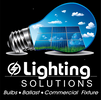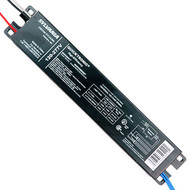What is a Fluorescent Ballast?
Posted by Jesse Willoughby on Aug 12th 2022
What is A Ballast?
A fluorescent tube uses electricity to make mercury gas emit ultraviolet (UV) light. When that UV(Which is invisible to the naked eye) interacts with the coating of phosphor powder inside the tube, it glows and produces the light we see and use in our homes. But, whenever we use electricity we must control it, otherwise we risk destroying the device and even putting ourselves in danger. To regulate the current flowing throughout fluorescent lights, we use what’s known as a ballast. The ballast in a fluorescent fixture is usually covered. Therefore, the light fixture may have to be partially disassembled to find the ballast. If the ballast is not functioning the bulb will not work. Also, the switch and lamp holders also must function properly to illuminate the fluorescent bulb.
The type of ballast needed is subject to the types of fluorescent bulbs that the ballast is powering and the starting method of the ballast.
Ballast Types
:
Pre-Heat Ballast: A Preheat fluorescent ballast is probably the oldest type of ballast available today. Preheat Start (Magnetic Design Only) Preheat Start ballasts require a starter (usually built-in, but on older fixtures the starter is sometimes separate) to establish the circuit through the ballast and pre-heat the lamp filaments. When the filaments have heated up, the ballast then provides a suitable voltage to the lamp to Strike (Cause it to light up) the bulb. This preheat start is positive for bulb life and only takes a few seconds to strike the bulb. Preheat ballast are most often found in appliances, medicine cabinets, small fluorescent fixtures, etc. LED tubes designed to operate with a ballast, will not work on a preheat ballast. However, a ballast by-pass led tube will work for these applications, when the power is connected directly to the led bulb. to the
Dimming Ballast: Dimming ballast are used when an application needs a room dimmed for various purposes. Dimming ballast are still sold. However, they are expensive and require a dimmer that is significantly expensive. Therefore, most fluorescent dimming applications have been switched to LED systems, Linear LED bulbs are easier to dim (with a compatible LED dimmer) and less expensive to buy.
Rapid Start Ballast: As the name implies a rapid start ballast strikes the bulb immediately, when the switch is turned on. Rapid start ballasts are designed to provide electricity to the lamps in a fluorescent lighting system at the moment they are switched on. This means that they can reduce electrical inrush and lamp-initiating inrush currents when the lamps are first turned on. These reduced currents allow for more rapid switching from a dark state to a light state, hence rapid start. The rapid start ballast also provides some operation-voltage control when the tubes are cold, reducing power consumption until it has reached its operating temperature and providing less audible noise at switch-on during this time. This rapid start method is great for many applications. However, this type of ballast is not the best option for bulbs that are turned off and, on many times per day. The bulb life is adversely affected by this starting method.
Program Start Ballast: A programmed start ballast from Howard Lighting. The programmed start ballast is markedly different from the instant start ballast in that the former applies heat to the cathodes of a lamp to switch it on. Also unlike the instant start ballast, the programmed start ballast triggers a specific sequence of events to ultimately power on the light. This starting method gives longer lamp for fluorescent bulbs that are turned on and off many times a day. For this reason, a Program Start Ballast is ideal for applications that use occupancy sensors.
.

